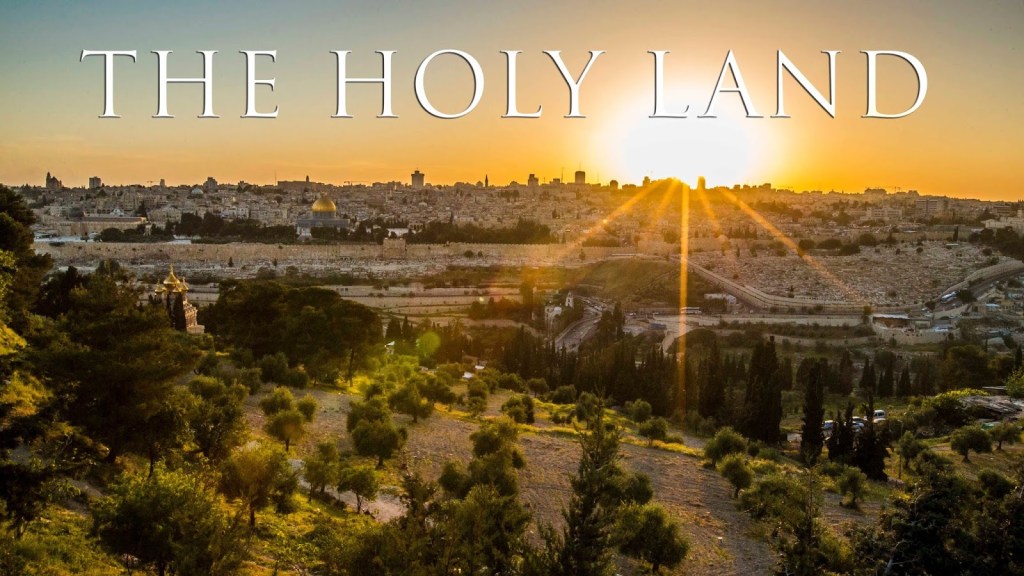
Many nations shall be joined to the Lord in that day, and they shall become My people. And I will dwell in your midst. Then you will know that the Lord of hosts has sent Me to you. And the Lord will take possession of Judah as His inheritance in the Holy Land and will again choose Jerusalem. Be silent, all flesh, before the Lord, for He is aroused from His holy habitation!” (Zechariah 2:11-13)
The Holy Land
Zechariah is the prophet who is tasked, along with Haggai, to encourage the returning exiles to stop delaying building the second Temple of the Lord in the broken-down city of Jerusalem. Nearly seventy years prior, Nebuchadnezzar destroyed Jerusalem and the Holy House of the Lord. Under the decree of Cyrus, king of Persia, the people were allowed to return to Jerusalem to build the house of the Lord God of Israel. The captives returned to Jerusalem, and work on the Temple began with the foundation being laid with great joy. However, the opposition would stop the building plans for nearly sixteen years. Men like Haggai, Zerubbabel, Jeshua, and Zechariah tried to instill a devotion to return to the building.
Haggai focused his preaching on those devoted to the Lord, while Zechariah addressed the souls who were not as dedicated. The Temple must be built. It was not that God desired to dwell in a building, but He was working through the people to reestablish the people of God in Israel. God had promised a remnant would return and a greater kingdom would come in the days of the fourth king (Rome). Building the Temple was part of the restoration of the land. The people must repent of their lack of faith and trust in the Lord and allow Him to be a wall of fire around them. When the Jews returned to Jerusalem, they built the Temple first. The walls were not rebuilt for another 94 years. God must be present first before the walls are built.
In the third vision of Zechariah, the land of Palestine is called the “Holy Land.” This is the only time in scripture the term is used. It is fitting to call Palestine the Holy Land because this is where the Lord has established His covenant with the world. Abraham took Isaac as a sacrifice to the land of Moriah. The ark of the covenant was called the holy ark. Jerusalem is known as the holy city of God and the holy mountain. Those who possessed the land were to be holy people as they followed the holy word of God. All the nations around them would see Israel as the apple of God’s eye and a holy nation devoted to Him. Zechariah sought to bring the people back to the relationship of holiness in the holy land to honor the glory of God.
The geography of the Holy Land is the testimony of the untold number of events that are told in the Bible in that small space of land. No place on earth is filled with more history and stories that go back to the beginning of time. God used that stretch of land to show the world His forbearance, love, grace, longsuffering, and love. Jesus Christ was killed on a tree outside the holy city of Jerusalem. The Holy Land was a place of sanctification. It was ravaged through the years with wars and cruelty. It is still called the Holy Land, but the significance was lost to its title nearly two thousand years ago.
God called the land the Holy Land because it was a place He would establish His covenant with all the world in Jesus Christ. There is no significance to the land now because the nation of Israel ceased to exist in the First Century. The Jews are no longer the chosen people of God. Jesus Christ has brought Jew and Gentile together in the covenant of grace through His blood. The true Holy Land is found in the geography of the kingdom of Christ or the church of Christ. Landmarks, rivers and seas do not determine the boundary of the Holy Land in Christ. Today, God’s Holy Land is the church, stretched out worldwide in great metropolitan cities to quiet mountaintop buildings where the saints meet.
The church is the manifold wisdom of God so that all nations can know the one true God. As a holy people, the saints of God establish a parcel of holy land in their communities as examples of the righteousness of truth. Husbands and wives shine forth as people of God, workers in factories and offices exemplify the character of honesty, integrity, and fidelity, local congregations of God’s people are busy sharing the gospel with their neighbors. The Holy Land. It’s you.
